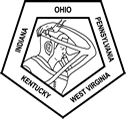<< Back to the abstract archive
Evaluating Sensory Nerve Regeneration Using Trigeminal Ganglion Response Properties in the Rat
Rami R. Zanoun, B.S., Paul N. Afrooz, M.D., Kia McLean Washington, M.D., Ernest E. Kwegyir-Afful, Ph.D., Daniel J. Simons, Ph.D., W.P. Andrew Lee, M.D.
University of Pittsburgh School of Medicine
2010-04-05
Presenter: Rami R. Zanoun
Affidavit:
Director Name:
Author Category: Resident/Fellow
Presentation Category: Basic Science Research
Abstract Category: General Reconstruction
Introduction: Measuring sensory nerve regeneration in laboratory animals is essential for quantifying functional outcome after transection and repair. Extracellular recording of trigeminal ganglion (TG) response properties during controlled whisker stimulation represent an electrophysiologic assessment of sensory nerve function in rats. The response properties of TG measure directional sensitivity, fine touch encoding, axonal integrity, and myelination of neurons innervating stimulated whiskers. This study establishes the utility of TG recordings in evaluating sensory nerve regeneration in rats. Methods: Twenty Lewis rats (250-300 grams) underwent transection and repair of the left infraorbital nerve. Five additional rats served as controls. Extracellular TG recordings were obtained during controlled whisker stimulation at 2, 4, 6 and 8 weeks post surgery. TG neuronal response properties were quantified using specialized software. Histomorphometry of nerve sections distal to apposition site was analyzed. Results: Angular tuning, which measures directional sensitivity, of regenerating neurons remained unchanged amongst all animals. The percentage of slowly adapting cells, which measures fine touch, steadily increased, approaching control levels. Similarly, maximal response magnitude, which measures axonal integrity, reached control levels by six weeks but was statistically decreased at earlier time-points (p<0.01). Neuronal latency, which is inversely related to axonal myelination, diminished but remained statistically larger than control levels (p<0.01). Those findings correlated well with histomorphometry. Conclusion: TG response properties represent an electrophysiologic model that characterizes sensory nerve regeneration in rats. The recovery patterns of neuronal properties create a unique window for testing pharmacological therapeutics and surgical techniques aiming to optimize sensation after peripheral nerve injury.



